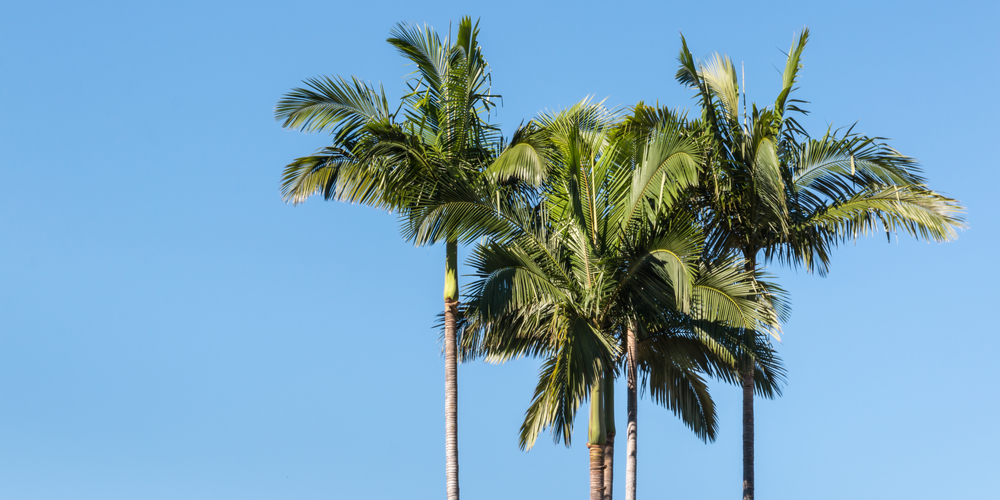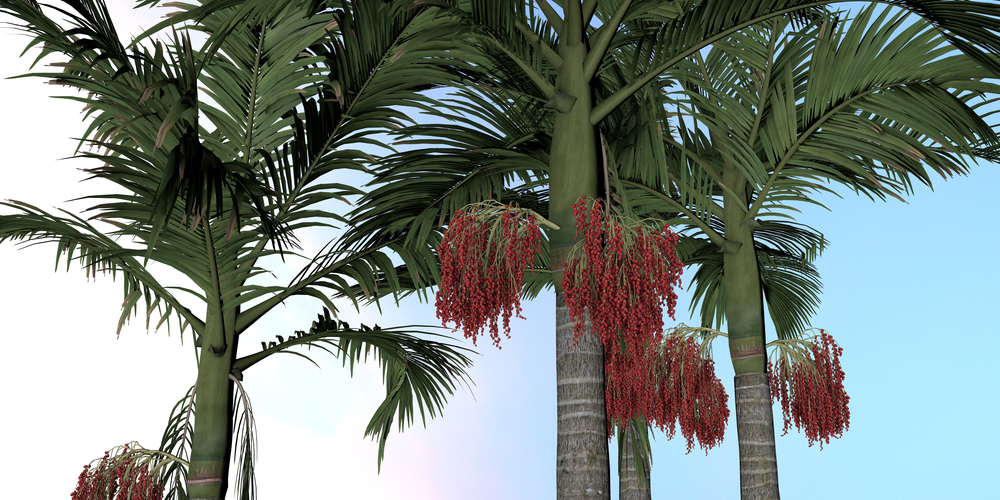The King Palm Tree has six different species. Two of the species are known as Archontophoenix alexandrae and Archontophoenix Cunninghamiana (which is the more common type). The palm tree is referred to as the patriarchal monarch of all palm trees because of its beautiful symmetry, elegant fronds, and stunning tropical effect on the landscape.
It’s known by various names, including Northern bungalow palm, Feather palm, and Alexandra palm. The palm tree was named to honor Princes Alexandra of Denmark; however, it was often wrongly referred to as Alexander palm. The tree grows to reach a 40 to 90 ft height, has a 12″ trunk (in diameter), and commands royal prominence wherever it’s planted. It’s native to Australia, fast-growing, and can be an elegant addition to tropical gardens.
What you Need to Know About King Palm Tree

The King palm’s trunk is smooth and ringed, has dark-green leaves, and produces small, red, beautiful fruits. The palm’s fruits have an ovoid shape, contain a single seed, and are initially green but turn red when they mature and ripen. The King, like all palm trees, grows fast.
The fruits are not edible and should not be consumed by people and animals. Therefore, you have to be extremely cautious since some species can make your dog react extremely and develop fatal complications.
Pinnate
The palm tree’s crown has 8 to 10 pinnate with fronds that are 15 ft long and have 60-80 leaflets on either side of the midrib. They measure 30″ and are twisted laterally. Plus, they are dark green from above and silver-grey from below. At their base is a huge, light-green crownshaft that’s 3.3 ft high.
Flowers
Its inflorescence arises from the crownshaft’s base, isn’t fragrant, and is creamy white when it initially comes out of its protective sheath. It changes to green while the fruits develop and have a final brown color before its shade by the tree. The palm tree flowers randomly within the year, and you won’t be surprised to find a group of King palm trees with flowers while some haven’t flowered yet.
Growing the King palm
As mentioned before, the plant grows relatively quickly when planted in the correct location with the right conditions and requires minimal care. For instance, the plant can grow up to a meter each year and can live to be 150 years. Since the King palm requires minimal care, you’ll have to ensure that it’s high-quality.
How to care for the King palm tree
King palms are low maintenance, look beautiful, and are the perfect fit for most architectural styles. The palm tree is easy to grow and maintain; plus, they look clean. Here’s everything you need to know about growing and caring for a thriving King palm tree.
Light
The King palm can be grown both indoors and outdoors. The tree prefers partial sunlight but can also grow well in full sunlight. Therefore, if you’re growing it indoors, then you’ll have to place it in locations that have plenty of sunlight.
You can plant the tree in places that offer shade when planting the palm tree outdoors. The shade will protect the tree from harsh sunlight, which is crucial, especially when it’s young. Palms can handle any amount of sunlight (within reason). Therefore, you can transfer your palm tree outdoors if it grows too tall for your home.
Water and Soil Needs
You’ll have to prepare your soil carefully if you want your king palm to grow well. You can do this by replicating its native soil constitution. Amend the soil (where you want to plant your palm tree) by adding a 4″ layer of sand in the bottom before adding a mixture of regular soil and sand for the rest of the site.
King palms need more water than other palms. Therefore, ensure that you water your trees thrice a week during summer and more during drought conditions. Use water with a pH of 6.5 to 7 and do it until the water runs through (for indoor plants) or it forms a puddle (for outdoor plants).
Temperature requirements
The king palm can grow relatively well in 28˚F; however, you shouldn’t expose it to temperatures lower than 25˚F. The King palm can be planted by individuals living in zones 9b to 11 with temperature ranges of 25˚F and above. Anything lower than that will kill your palm tree.
Fertilizer
You should fertilize your King Palm with slow-release fertilizer about four times yearly (or according to the instructions on the label). The fertilizer is usually labeled 13-13-13 or 12-4-12 and is made in the form of pellets that are buried about 2 ft from the tree’s base. The fertilizer is available in various garden stores.
If your palm tree’s fronds turn light green, then yellow, then it means that they need micronutrients and nitrogen.
Reasons Why King Palm Tree Maybe Dying
Common diseases
You should avoid pruning your palm tree since it can’t heal the scars. The scars that are left behind after pruning expose the palm tree to fungus and pests, increasing the chances of disease. The palm will be exposed to “pink rot,” which is often a deadly fungal infestation that attacks damaged or stressed plants.
In addition, your palm tree could develop root rot if the water in its roots doesn’t drain fast enough (or at all). Therefore, it would be great to ensure that you plant your palm in well-draining soil and wait for them to self-clean (refers to when older fronds are forced off the tree by newer, younger fronds.
Common problems
Although King palm trees are usually pest-free, they could still suffer infestations of mealybugs or spider mites. In addition, while the tree is quite tolerant to winds, its fronds may fail to maintain their lush appearance if they are exposed to strong winds.
King Palm Tree Propagation
Palm trees can only be grown by planting their seeds. Unlike other propagation techniques, cutting a palm tree for replanting won’t work. Therefore, you’ll need to prepare or buy some King palm tree seeds to plant. You could plant them in a pot and transfer them later to your garden or lawn or plant them directly.
If you’re thinking of growing palm trees, check out these useful guides:
